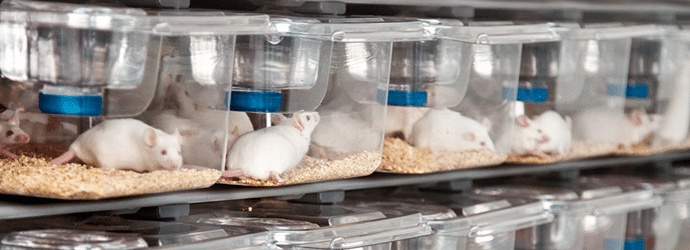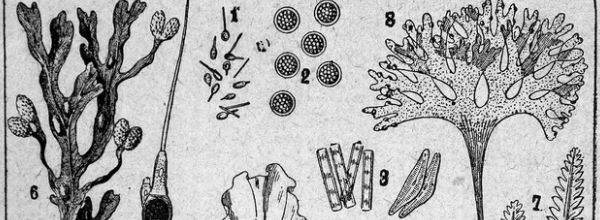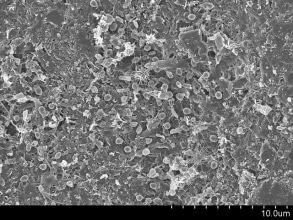Anyone working with laboratory animals has probably realized that simply putting two animals together does not always yield new offspring and reliable continuity of the animal line – unfortunately animal husbandry isn’t that simple! Of course, apart from making sure that the two animals put together are from different genders, there are a lot of things that need to be taken care of. So for times when mouse husbandry isn’t proving to be smooth sailing, and you are confused about what could be the obvious thing you are missing, here are a few troubleshooting guidelines:
Problem: My Breeding Pairs are not Producing any Litters. Why?
Solution 1. The breeders are too old.
Females begin to show poor reproductive capacity at 6 months of age or after 6 litters, whereas males show declined breeding at the age of 1 year or so, depending on strains. Try replacing your breeders with younger animals.
Solution 2. The breeders are too young.
Animals reach sexual maturity between 6 to 8 weeks of age. Younger females may generate litters but these are often smaller in size and weak; avoid using very young mice for breeding. Take advantage of experienced animals that will give bigger and healthier litters.
Solution 3. Mix it up a little.
If you keep a small colony and interbreed between closely related animals, your breeding pairs could be too similar genetically, thus introducing mutations and reducing fertility. Hybrid strains (strains produced by crossing two or more inbred strains) show hybrid vigor, or better fertility and reproductive capacity, than inbred strains. Try introducing some fresh blood into the line.
Solution 4. The mice may have reproductive or hormonal disorders either due to genetic modifications made for the purpose of research or due to poor health conditions.
Check your mice for signs and symptoms of any disease – if you’re still new to animal work and aren’t confident in your ability to spot disease, ask a more experienced person to help you out. Another important point is to check with the literature to identify known effects on fertility and reproductive behavior caused by the modifications to the genes under study. Sometimes the gene altered may not be the most obvious player in reproductive or hormonal physiology giving you a surprising insight into its role and may produce an interesting research article.
If your mice do not produce a litter within 60 days of either mating or since their last litter, they probably need to be replaced.
Problem: I Need More Mice Fast. How can I Ramp up Breeding?
Solution 1. Conserve space by setting up harem breeding.
In a harem, a single male is set up to breed with more than 1 female (generally 2, sometimes 3) in a cage. This will save you space and money, and will mean your mice will have company – mice are social animals so housing them together keeps them happy.
Solution 2. Cycle a breeder male through multiple female cages.
This is particularly useful when you have a shortage of male breeders. Once the female is pregnant, remove the male and transfer him to another breeding female cage. This may not be ideal (see below), but if lack of male animals is the problem, add another female to the cage for company. Successful mating can be determined by inspecting the female’s vagina for the presence of mating plugs, which remain in place for around 12 hours post-mating.
Solution 3. Co-house potential breeder females together at the permissible cage density to suppress their estrous cycles.
When these females are then exposed to a breeder male, the male hormones induce simultaneous estrous cycles in the breeder females (Whitten effect). This synchronization of estrous cycles helps to generate a large batch of litters from a group of breeder females. The litters will be of similar age, thus giving a pool for a big experimental batch.
Problem: There are no Pups Where There were Pups Before. What Just Happened?
Unfortunately, first time mothers and very young females often cannibalize their litters, especially when stressed.
Solution 1. Use an experienced, slightly older female. Or wait for the next litter.
Solution 2. Reduce any possible causes of stress to the female.
Avoid disturbing the cage, especially for the 48 hours after they give birth. Even after this point if you can avoid interfering with the cage until after the pups are weaned, so much the better! Take care to prevent any noise, air drafts, vibrations or fluctuations in light cycles, humidity and temperature that may stress the female further. Ask the facility staff to keep the noise down where possible, especially with hoovering and music.
Solution 3. House pregnant females with another pregnant female, non-pregnant female or mating male.
Pregnancy is stressful, especially if you have to go through it alone and without any support, so where possible, make sure your breeding females have company. Co-habitation allows the mothers to have a less stressful and more supportive environment. It is best not to add new mice to the cage after the mouse has become pregnant as this might cause them more stress while they adjust to having a new roommate. Never add a new unfamiliar male to the cage of a pregnant female as this may lead to termination of pregnancy (Bruce effect). Also avoid adding any animals to the breeding cage just a day or two before expecting birth.
Problem: The Females don’t Seem to Nurse their Litters Properly. What can be Done?
Solution 1. Provide a quiet stress free environment for the mothers and their young ones.
Do not change cages or bedding for the first few days after birth. Also, provide them with nesting material like tissue strips, cotton squares, cardboard boxes or plastic housing; they love the comfort and enjoy something to play with and nibble at.
Solution 2. Transfer newborns to a foster mother.
The foster mother should have litters of her own within few days of age of the fostered pups. If a foster cage with a different coat color is available, that is great to distinguish the pups later. Remove the recipient mother and mix the foster litter with the recipient litter. Rub the new litter with some dirty bedding from the cage to mask their foreign scent and try to fool the mother. Re-introduce the foster mother. Carefully monitor the cage without disturbing the animals to confirm that the foster mother is nursing the new litter.
Solution 3. Use dietary supplements or a separate enriched diet for breeder mice to improve reproductive health and successful nursing.
Question: How do I Know When to Wean Young Mice?
Answer 1. Mice can be weaned at 3 to 4 weeks of age, depending on strain and health of mice.
They should have developed a shiny adult coat and teeth, should have their eyes open and must be active and robust. They should be able to reach for food and water on their own. If they seem weak, unhealthy and unable to feed themselves, leave them in with the mother for a few days longer.
Answer 2. If a nursing female gives birth to a second litter, wean the first litter as soon as possible.
The older litter may trample the new litter due to overcrowding and prevent them from getting nursed by the mother.
After you wean mice, separate the males and females into different cages and mark and document them appropriately. If the litter was weaned prematurely (for any reason), provide them softened wet food pellets or gel packs inside the cage until they can successfully feed on hard pellets.
All in all maintaining a genetically modified animal colony is (hopefully) not going to be the most difficult part of your experiment, and you will (usually) have help from other lab members and expert knowledge from the facility staff – mice are easy to handle and breed once you are armed with the right knowledge and training. Above all, go with your instincts to provide the animals with adequate care and support and they will usually produce the litters you need





